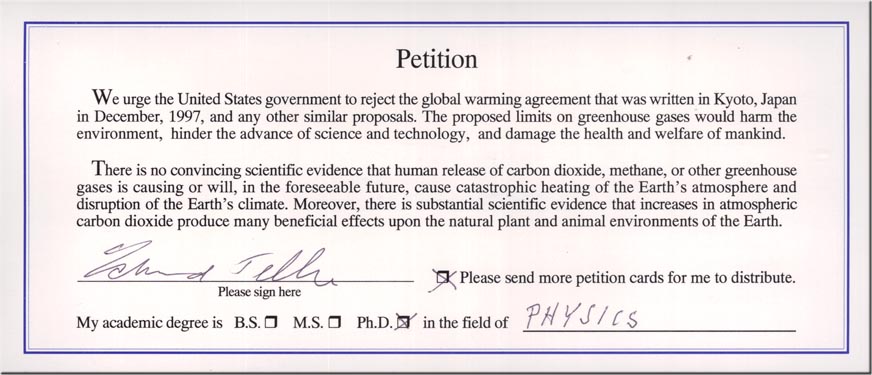What you will also have is scores of thousands of people using the day to proclaim their agenda of lowering deadly carbon emissions. You'll have politicians cry for more government regulation of evil industries like Big Oil, Big Auto (Wait, don't they own that one now?), and Big Puppy Mills. For example, you can read articles by VP Joe, Sen Kerry (D-MA, which might actually stand for Mars), and EPA admin Lisa Jackson.
It is statements like these, that demand ever stricter emissions regulations and clean energy mandates, that prompt me to celebrate this Earth Day by taking the longest route home I can do feasibly and, if I have any left, burning a Styrofoam plate on my porch when I get there. I do this because I firmly believe that man-made global warming is at best an uncertainty, and at worst is flat wrong.
If any of you have been following my blog since its inception then chances are you have heard this argument before. Feel free to talk amongst yourselves. Any subject will do.
For the rest of you, I will direct you to one of my favorite sources on Global Climate Change, the Petition Project. This is a petition that has been signed by 31,486 American scientists, including 9,029 with PhDs.
 Their research is one of my favorites to cite for a few reasons, not the least of which because they have plenty of colorful pictures which makes it very easy to break the argument down into crayons.
Their research is one of my favorites to cite for a few reasons, not the least of which because they have plenty of colorful pictures which makes it very easy to break the argument down into crayons.Let's start with looking at what the temperature has been in the past...

The black line in the middle is the average temperature over the past 3,000 years. It is just a hair below 23 degrees C. A notable spike occurred around 1100 AD, and a notable dip at 1700 AD. If you examine really closely, you'll see that in 2006 we are sitting at approximately 22.8 degrees C...Which is actually below the 3,000 year average. In other words, it is a good thing we are warming up, because otherwise we would be headed back to freezing at Valley Forge! Also notice that over 3,000 years (during which time humans did not have access to fossil fuels) the temperature has not fluctuated more than 3 degrees.
I know what you're thinking: "Sure, in the past warming trends were naturally occurring, but now it's because of those darn fossil fuels! If this trend doesn't stop we'll be spontaneously combusting on the way to Starbucks, and those glaciers will melt and drown us all!" Let's just take a look at those glaciers...

The black line in the middle, sloping upwards, is the trend of glacial melt that is occurring. It begins in the early 19th century (in fact, since glacial melt lags behind temperature increase by about 20 years, the trend actually began even earlier than shown). Also mapped are fossil fuel uses. Note that the use of coal, oil, and gas increases dramatically beginning at around the time of WW II. Despite this fact, the rate of glacial melt remains constant. Therefore, glacial melting (which is affected primarily by temperature and precipitation) is not tied to the use of carbon producing fuels in the slightest.
"But wait!" you say, "The temperature is rising, so if man didn't do it, what did?"
I'm glad you asked.

If you look out your window, assuming it is during the daylight hours, you just might observe a large ball of burning fire in the sky. This celestial body, affectionately dubbed the sun, is primarily responsible for heating the atmosphere of Earth. As shocking as this might seem, the driving force (represented as the red line above) of artic temperature is the sun. What does not drive temperature increase is hydrocarbon use.
Nor is greater hydrocarbon use driving violent weather patterns. Rainfall is increasing at a constant rate of 1.8" per century. The number of Atlantic hurricanes that make landfall and max wind speed of those hurricanes are both holding steady over the century, and the number of tornadoes is actually decreasing over the century. The sea level is increasing at a steady rate of 7" over 150 years. This rate has been completely unaffected by increases in hydrocarbon use.
Even the basic hypothesis that hydrocarbons are the main driving force behind increases in atmospheric CO2 concentrations is not necessarily true.
 Note the increase was 30% prior to the great spike in hydrocarbon use. After, it was 22%.
Note the increase was 30% prior to the great spike in hydrocarbon use. After, it was 22%.
The study goes on to show that greater carbon concentrations in the atmosphere are actually beneficial to wildlife, both flora and fauna.
The bottom line is this: Man is too small a factor on the planet to attribute global environmental changes to him. These changes are naturally occurring, and the Earth knows what it's doing.

